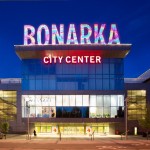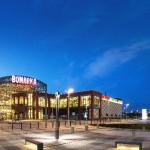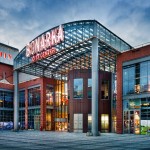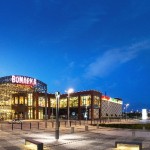
ACROSS: On December 1, 2015, TPG Real Estate closed its acquisition of TriGranit. How do both enterprises benefit from this transaction?
ÁRPÁD TÖRÖK: After a long period of stagnation, the last couple of years brought a steady awakening to the Central European real estate market. Poland has already been active for years, followed by the Czech market in 2015, while the other countries in the region are also showing signs of an awakening. An increasing number of developments are carried out in the region, there is more money in global funds than ever before, and all major investment funds are active in the region. Similarly, TPG, as a leading global private investment firm, sees big potential in the region. With this transaction, TPG’s main aim is to create the leading Central European real estate platform by multiplying TriGranit’s present platform size through acquisitions and new developments. They regularly invest in companies that are among the most successful and experienced on their given market. TriGranit absolutely represents a unique opportunity to reach these aims. As one of the largest fully-integrated real estate platforms in Central Europe, TriGranit has a real-estate track record spanning more than 20 years. Our present portfolio and an experienced and multicultural management team provide a perfect basis for further growth.

ACROSS: What does the acquisition mean for TriGranit in practice?
TÖRÖK: During the financial crisis in 2008, we modified our strategy and began to focus more on the development of shopping centers and class “A” office complexes. Our aim was to lower diversification and focus on what we were best at. This shift in our activities helped us not only to overcome the crisis, but also to be one of the few developers in the region to carry out a new development nearly every year. The changes in the life of TriGranit with this deal will be similarly significant, if not even more so. On one hand, we are going to widen our activities. In addition to development, property, and asset management, we will also carry out acquisitions. On the other hand, our geographical focus will be narrower. We are going to focus only on countries with the best economic forecasts.
ACROSS: As part of the transaction, TPG acquired a portfolio of retail and office assets, predominately in Poland, from TriGranit. Which ones and why?
TÖRÖK: Poland has already been our primary focus for the last couple of years and over 60 objects in our current portfolio can be found there. Although Warsaw shows signs of saturation, Poland is still the most “bullish” market in Central Europe, particularly with a view to the potential of the secondary cities here. As for our Polish assets, TPG acquired Bonarka City Center, B4B Offices and B4B development sites in Krakow, Poznan Offices, and the Silesia Offices development sites as part of the deal.
ACROSS: The new TriGranit will manage a wider scope of activities than before. Please tell us concretely what activities this entails.
TÖRÖK: The types of projects we are interested in will still be integrated office and retail schemes, stand-alone complexes, and malls, the prototypes of which we have already developed in the past in several countries in Central Europe. These are the kind of “products” TriGranit is known for, has deep experience in, and that will continue to distinguish us in the future. In the future, however, we will not just develop and carry out property management activities for these assets, but will also be an active player in the field of acquisitions. Our aim is not only to acquire retail and office schemes, but to use our real estate expertise to refurbish, enlarge, and reposition both office and retail complexes.

ACROSS: In which countries is TriGranit currently active? Do you intend to enter new ones in the near future?
TÖRÖK: We will be focusing on the so-called Visegrád countries (Poland, Hungary, Slovakia, and the Czech Republic), on the countries with the strongest economic forecast in the region. Except for the Czech Republic, we have been present in these countries for more than a decade and have several successful developments behind us. Poland is our main focus and we will be concentrating on Warsaw and on secondary Polish cities. In the other three countries, we are concentrating on the capital cities–Budapest, Bratislava, and Prague.

ACROSS: What trends do you see in general in Central Europe’s shopping-center market?
TÖRÖK: While the CEE retail sector saw relative calm months in 2015, the coming years should tend to be much more active. Significant growth is expected in modern shopping center schemes in Warsaw in the next two to three years, while in secondary cities, new small retail parks and discount centers will be built. The three Polish pipeline retail centers to be finished in 2016 are the Posnania in Poznan (99,000 sq m GLA), the Wroclavia in Wroclav (64,000 sq m GLA), and the Metropolia in Gdansk (34,400 sq m GLA). The Czech market in 2016 is even livelier. Five new schemes are forecast to open in 2016 in the Czech Republic: Aupark in Hradec Kralove (22,600 sq m GLA); Central in Jablonec nad Nisou (11,270 sq m GLA); Prior in Přerov (13,732 sq m GLA); the Nova Palmovka mixed-use center, offering 5000 s qm GLA retail space; and the 35,000-sq-m extension of Centrum Chodov in Prague. The Hungarian market also shows signs of recovery, with increasing retailer turnover and a rise in consumer spending, which is a good sign for the future, especially now that the Hungarian retail market is far from saturated. We do not have a pipeline project for 2016, however.
ACROSS: How has the relevance of food-courts in malls in the region changed in recent years?
TÖRÖK: A report carried out by CBRE last year among 22,000 customers across 22 markets in the EMEA region showed that 51% of Polish shoppers visit a mall just to eat or drink and that 32% of Hungarian visitors and 26% of Polish visitors thought the food and beverage offered in a shopping center were important in determining where to visit. What’s more, approximately 25-30% of the overall spend per visit is on food and beverage in Poland and Hungary. This underlines the fact that foodservice is becoming more and more important, not only for footfall, but also for revenue. That means at the same time that we have to offer a wide variety of eating options. The classic fast-food restaurants are now far from enough. In the case of our mixed-use complexes like the Bonarka City Center in Krakow, however, where we have both retail and office space, we have to consider the needs of the people working in our office buildings, who eat on a daily basis in the food court at the shopping center and look for diversified, good quality, but “fast” food. In addition to growing demand for F&B opportunities, the malls must also provide a large variety of leisure facilities. We cannot speak of simple shopping centers any more, the future is about leisure and shopping centers.








